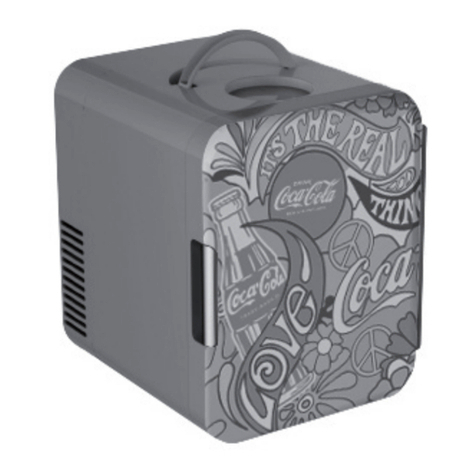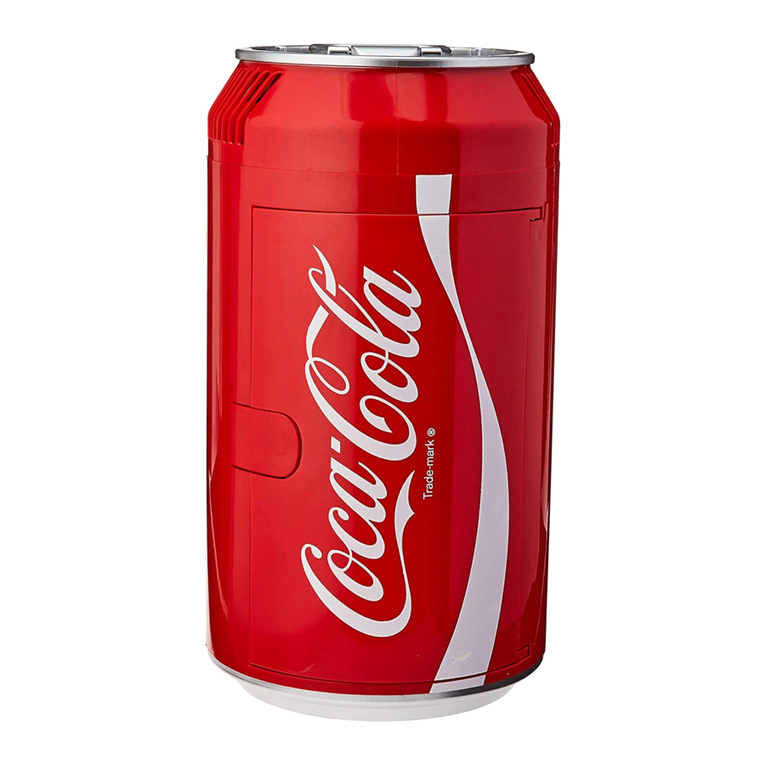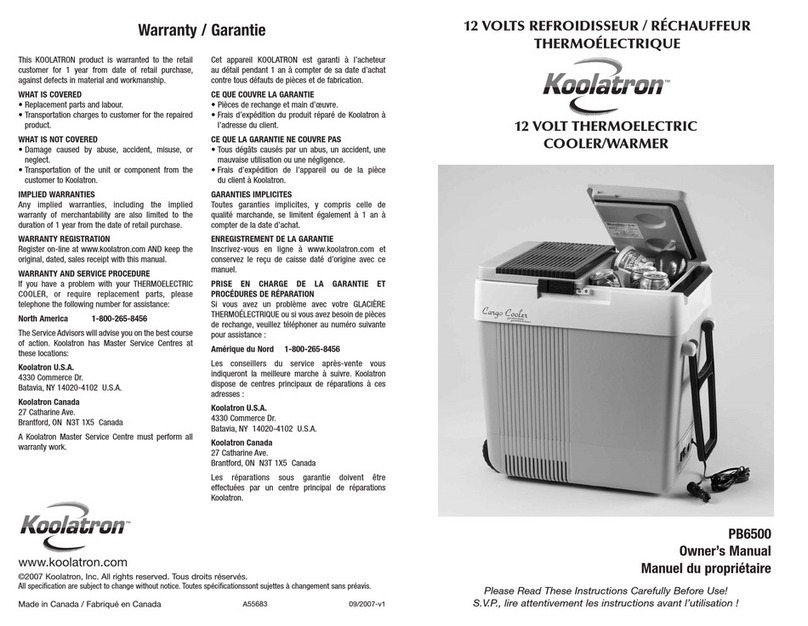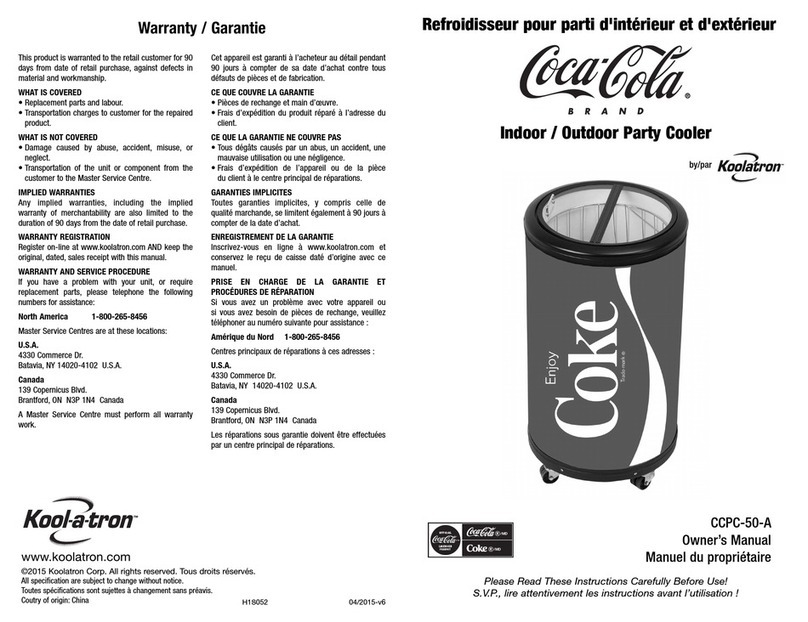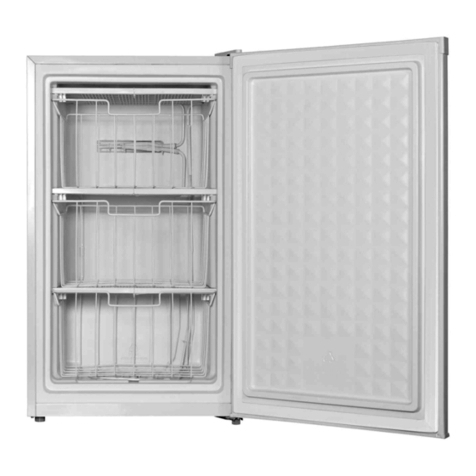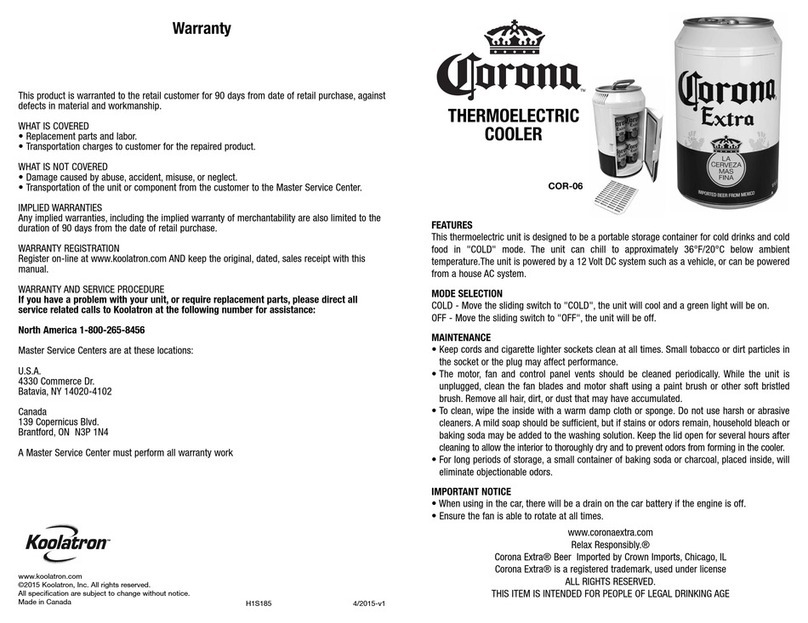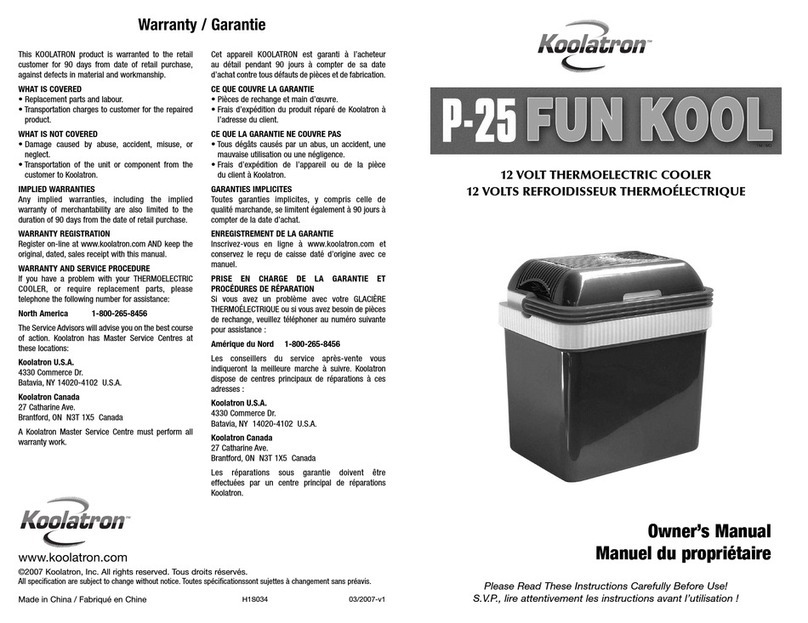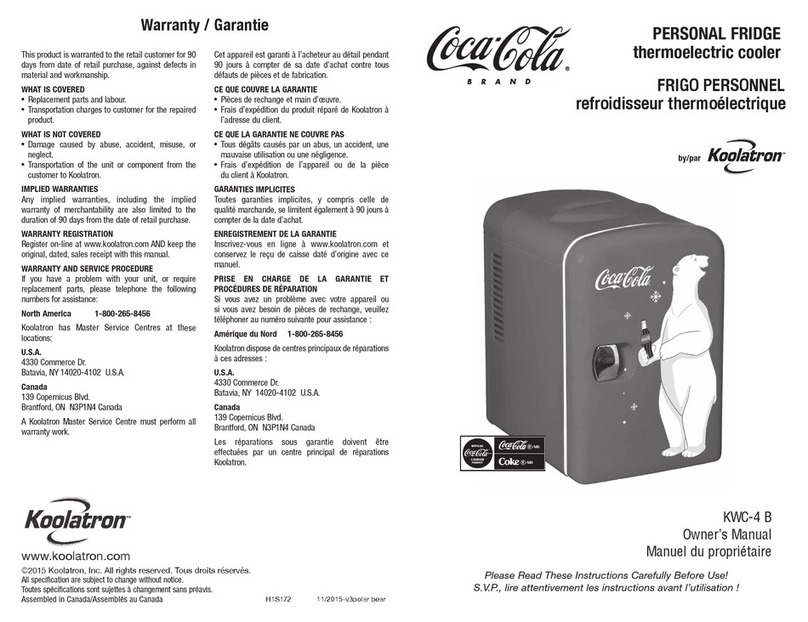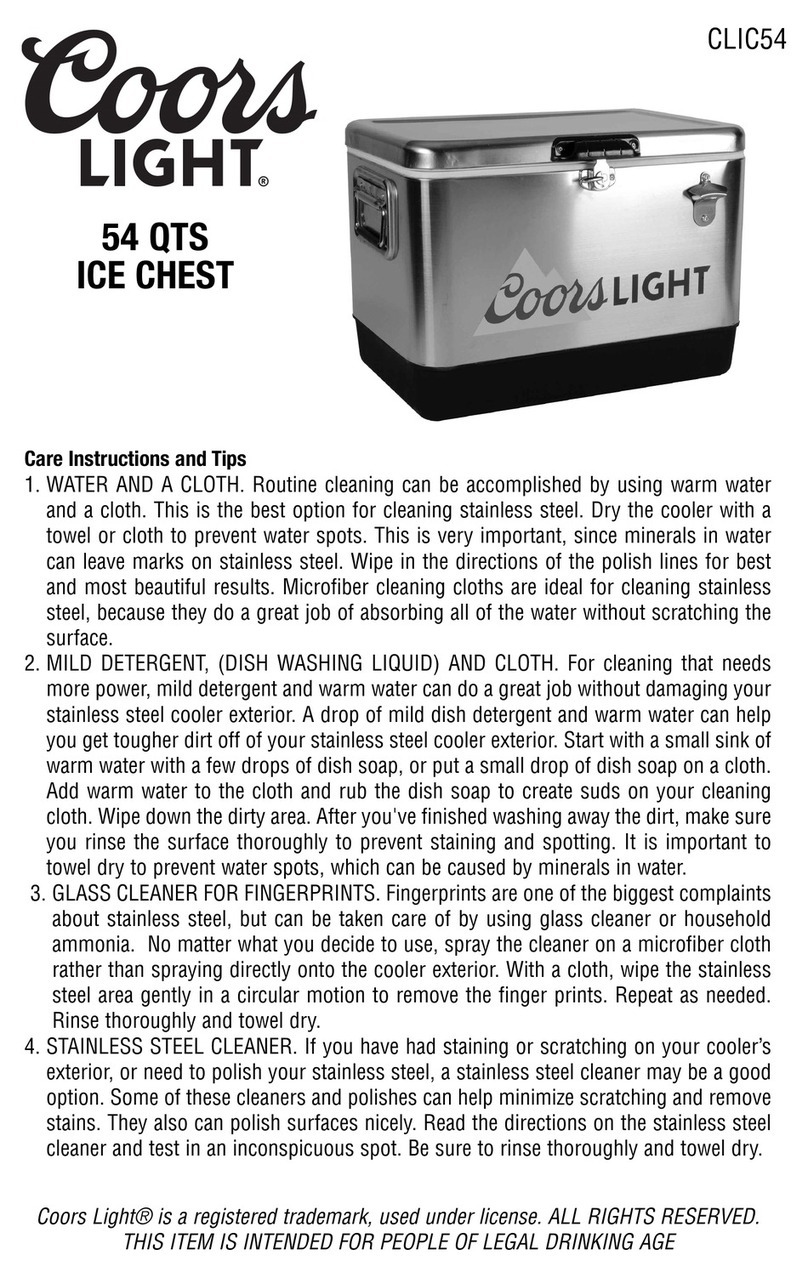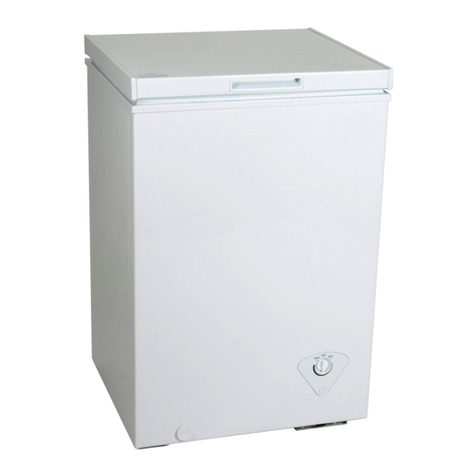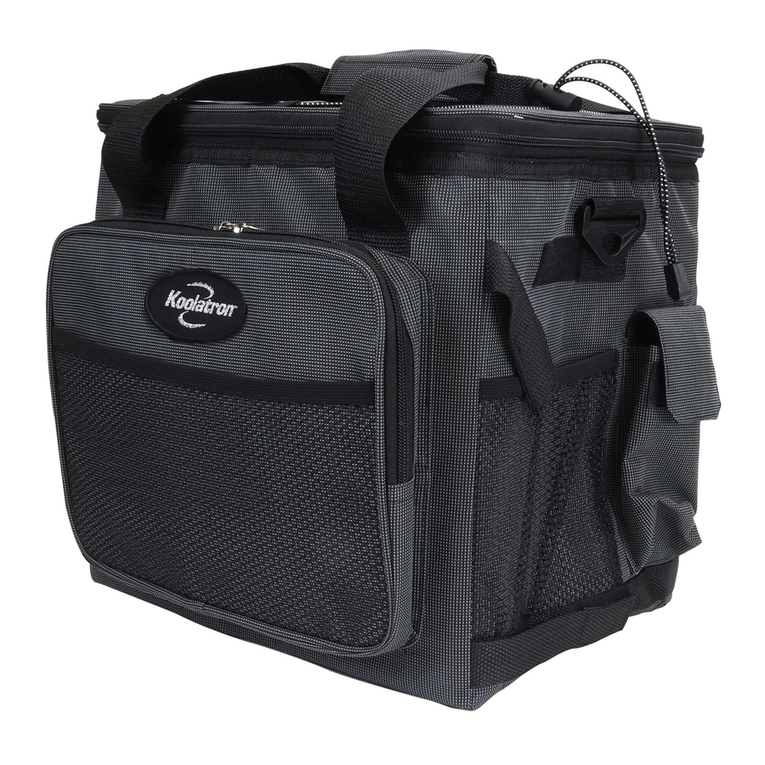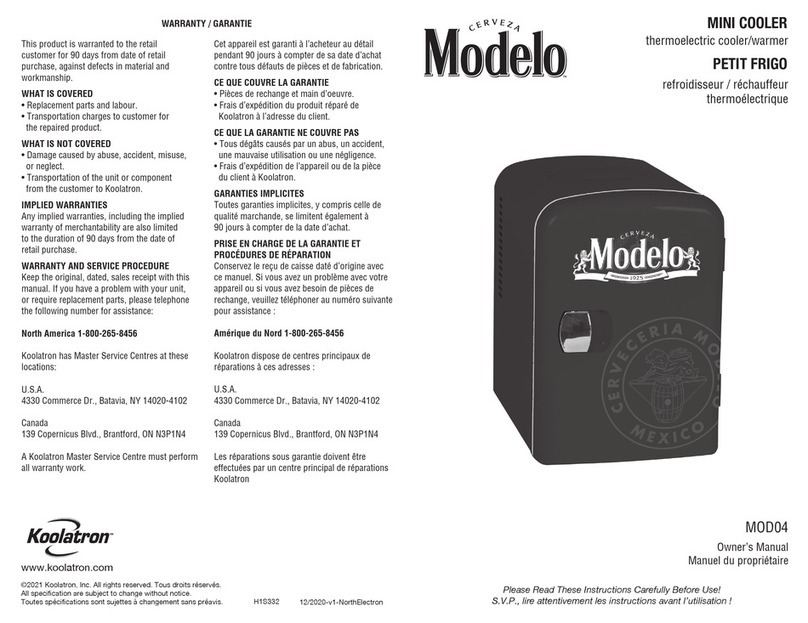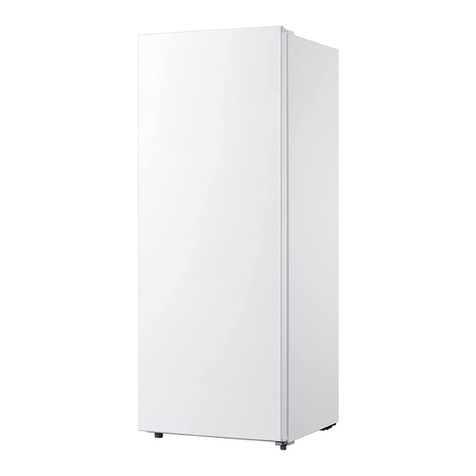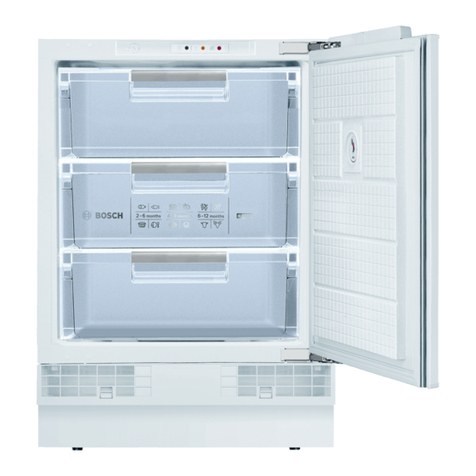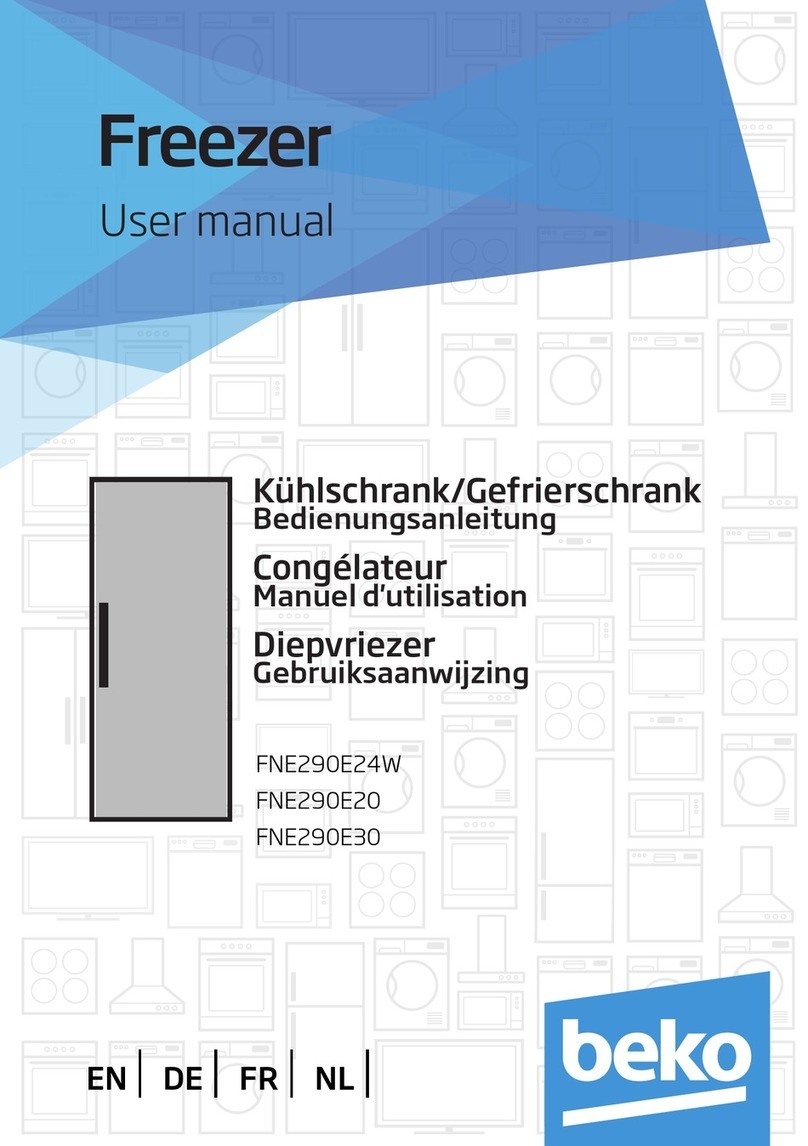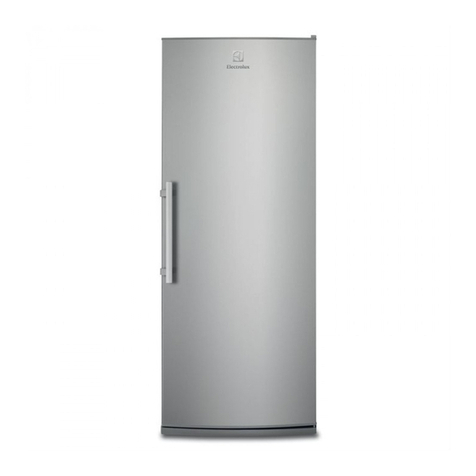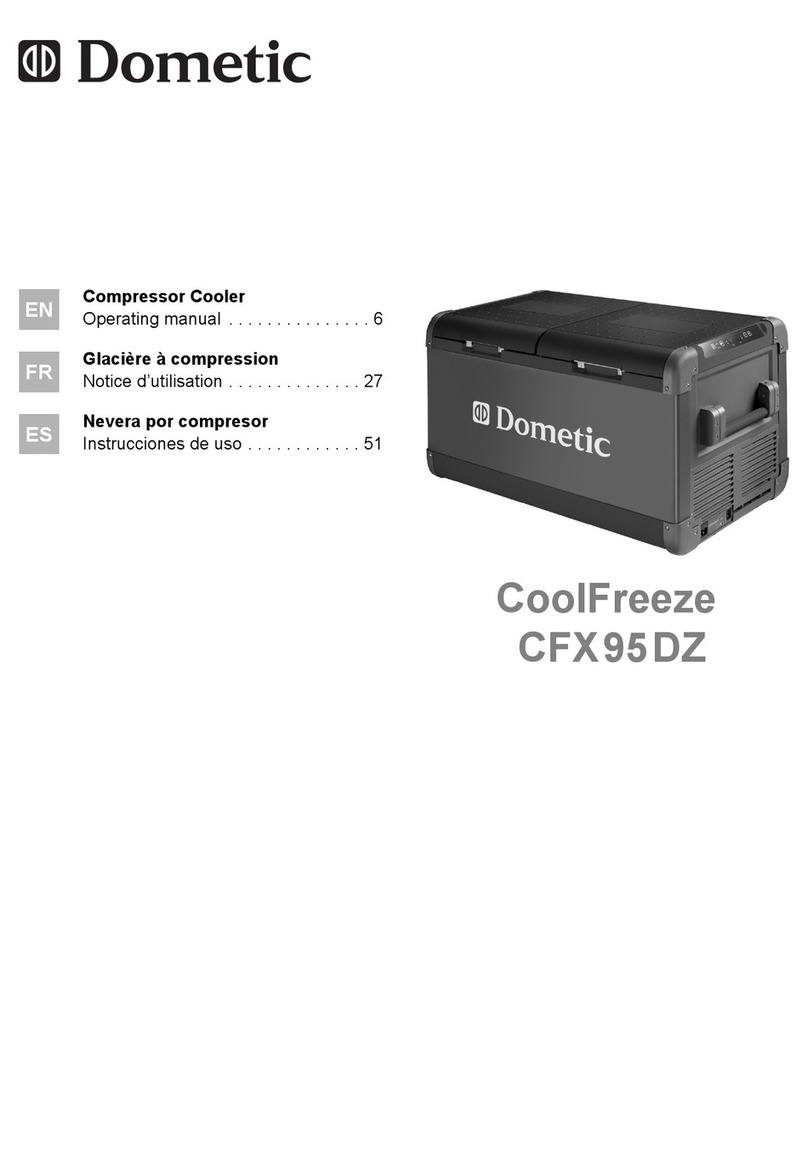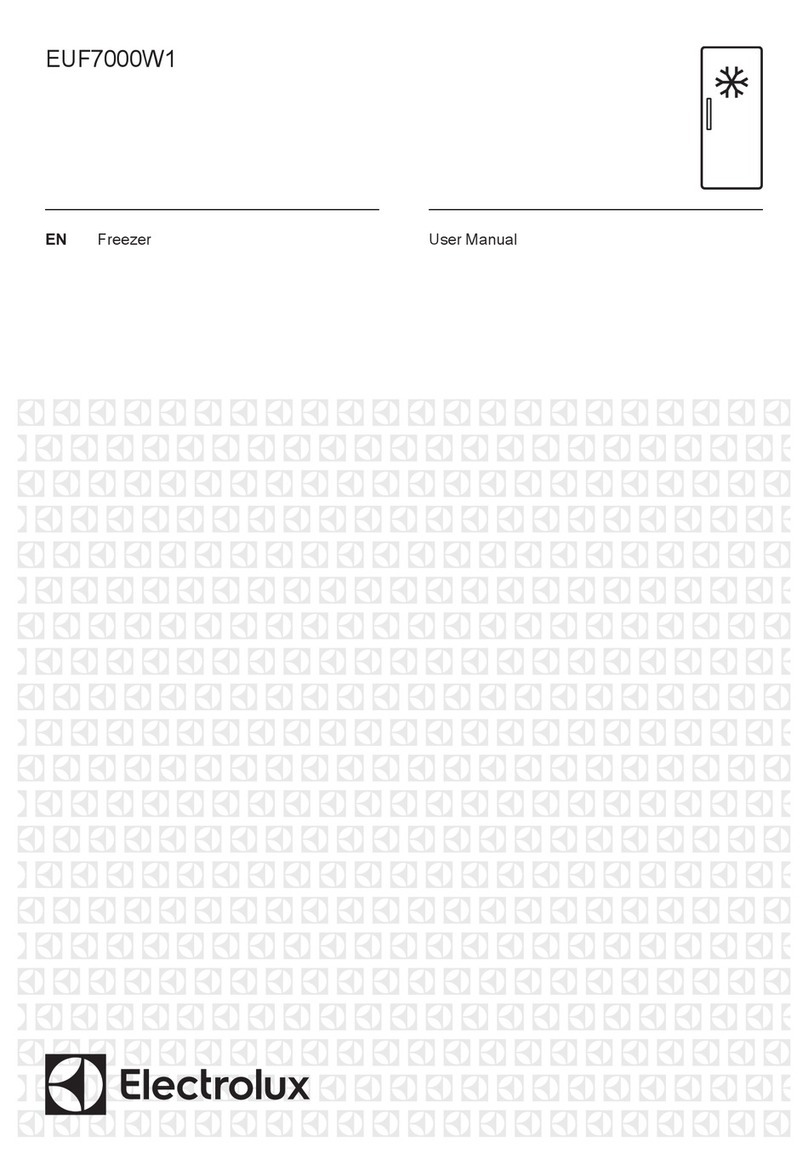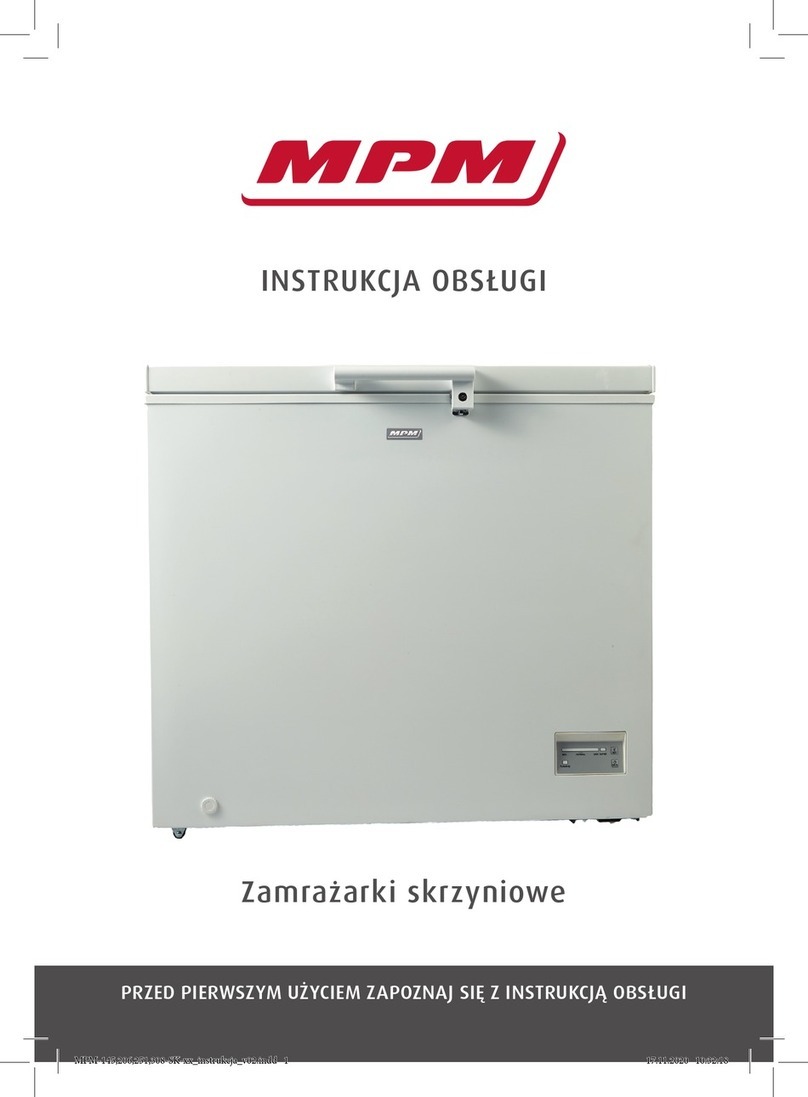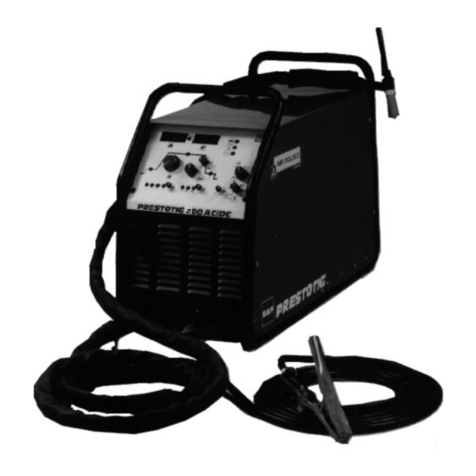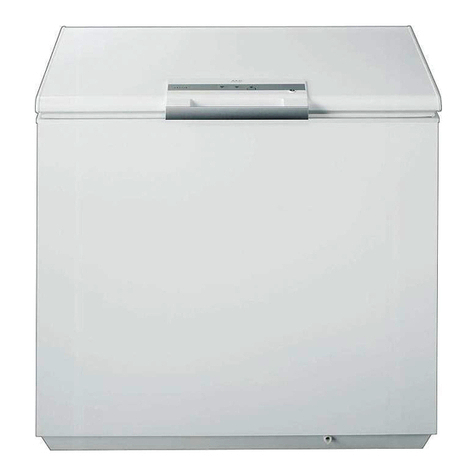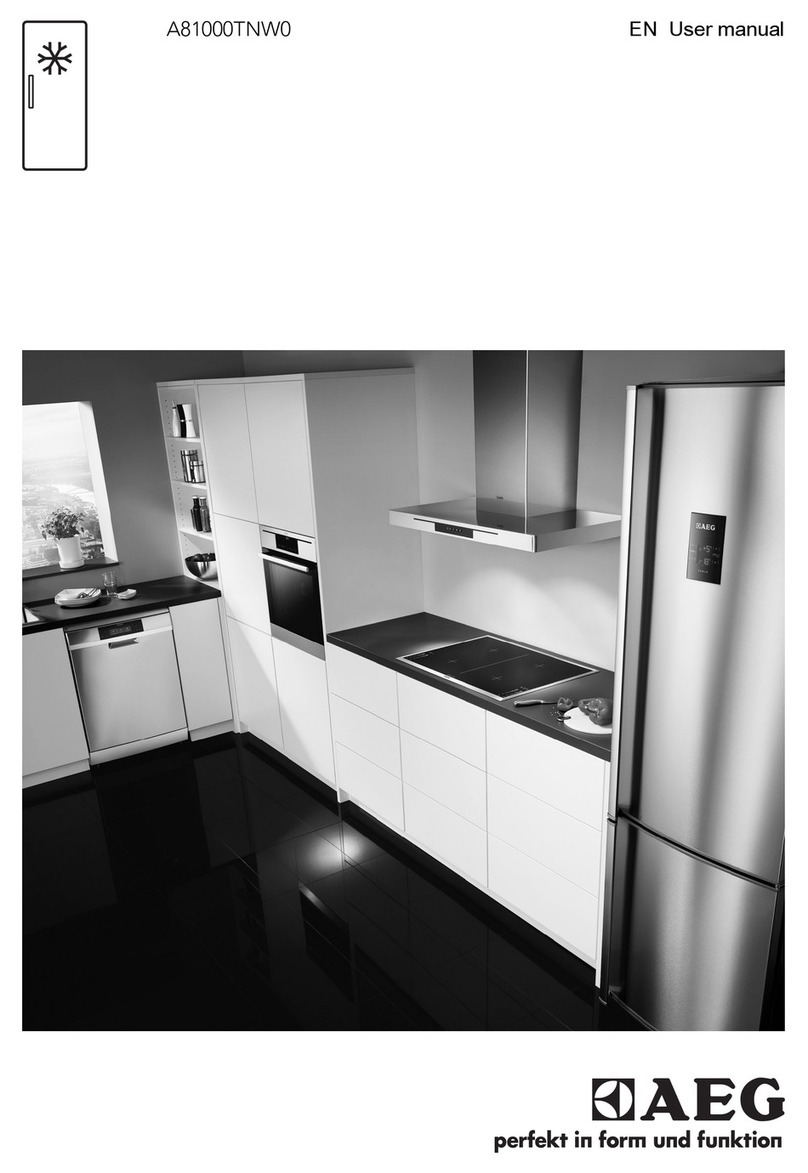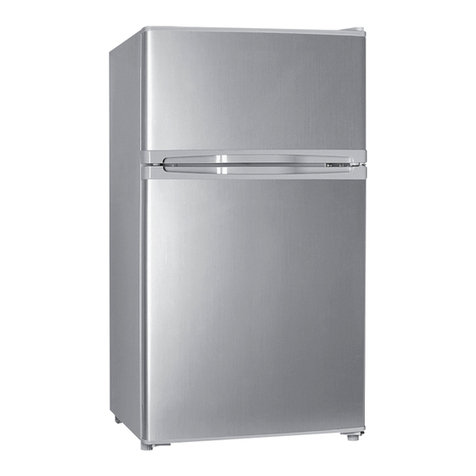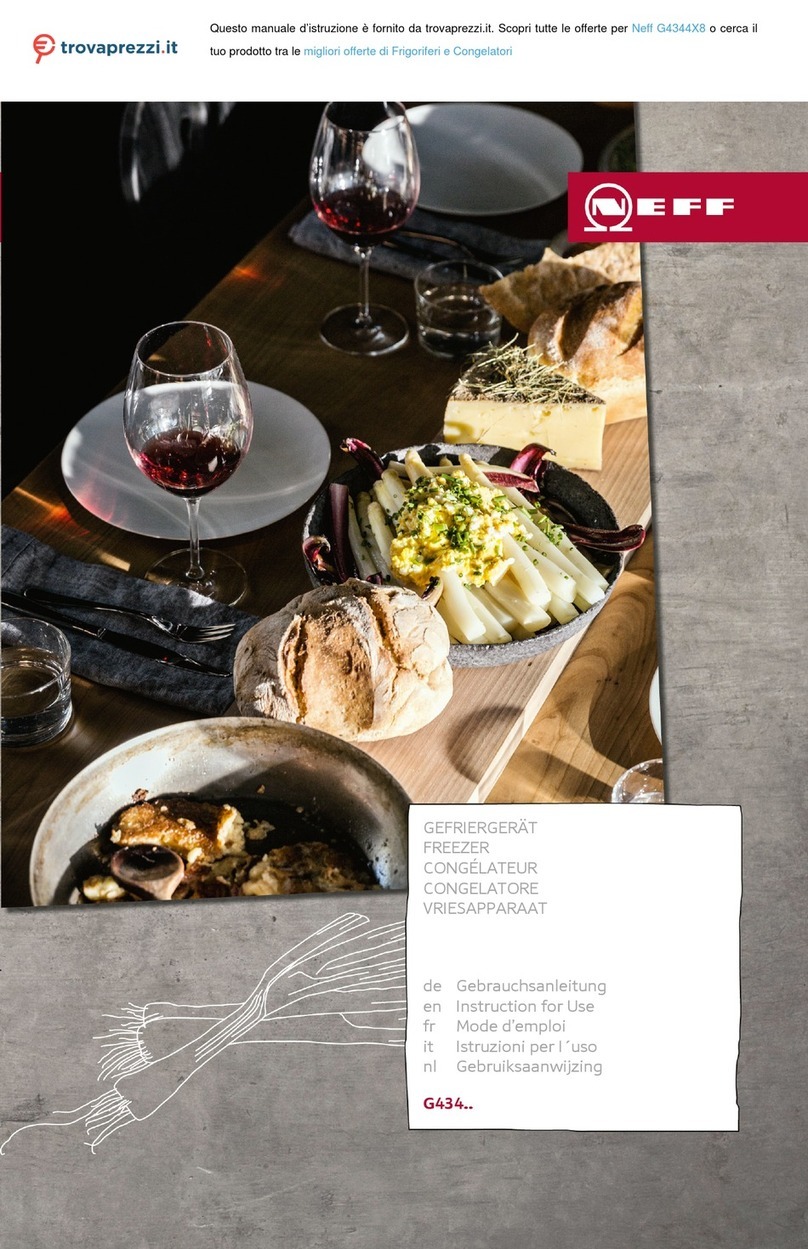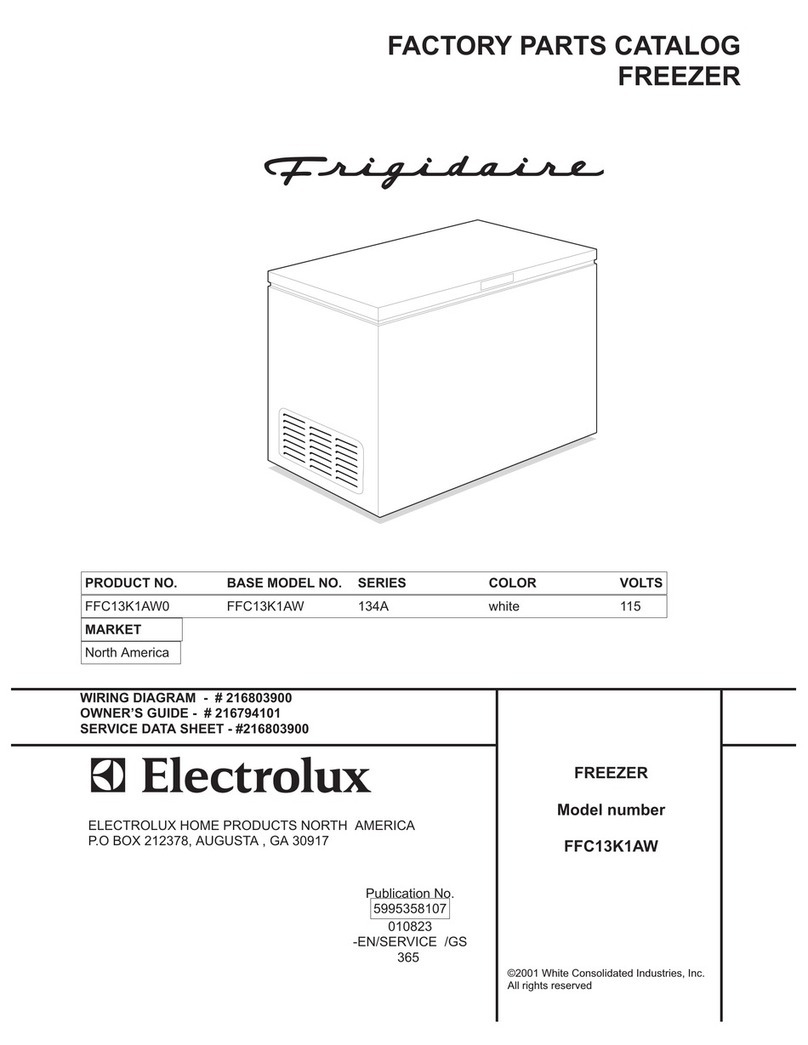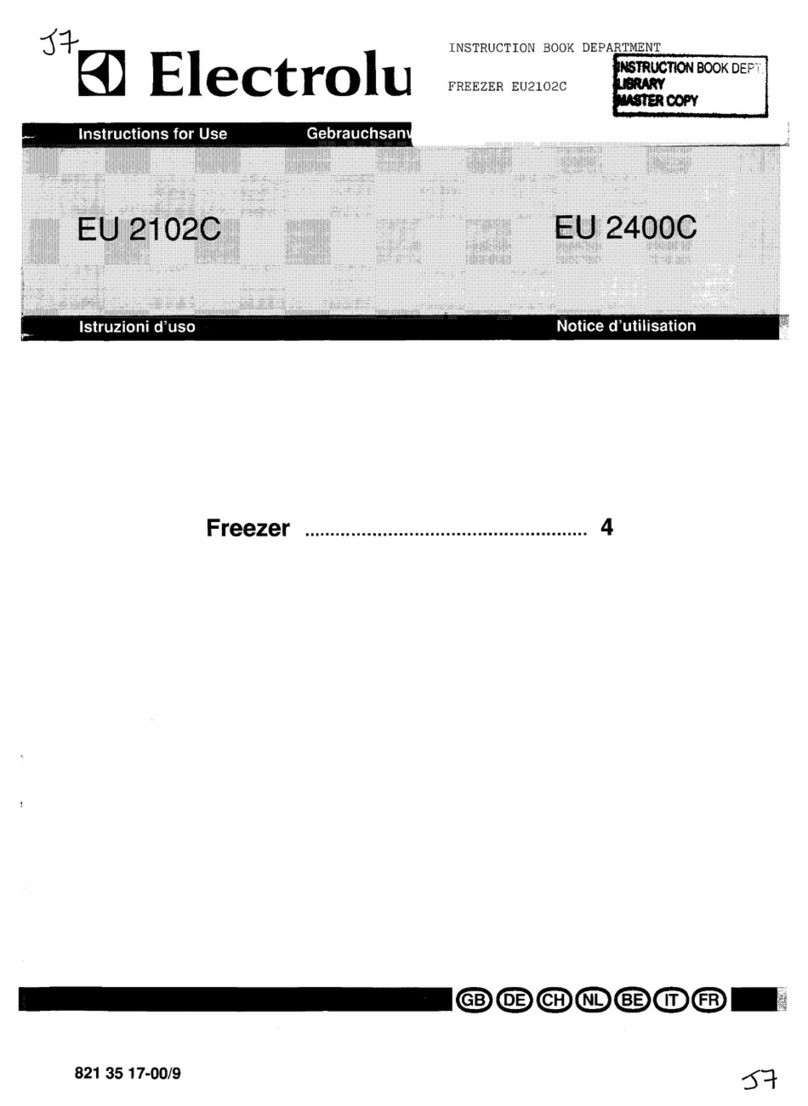
3
Introduction
Congratulations on your purchase of a high-quality Classic product. Your 3730-936 represents the state of the art
in upright freezer design and is designed for reliable and trouble-free performance.
Important Safety Instructions
WARNING
1Read these instructions.
2Keep these instructions.
3Heed all warnings.
4Follow all instructions.
5Do not use this appliance near water.
6Clean only with a damp cloth or sponge using a non-corrosive, neutral detergent. Remove residual detergent with
clear water.
7Do not block any ventilation openings.
8Install in accordance with the manufacturer’s instructions.
9Do not install near any heat sources, such as radiators, heat registers, stoves, or other apparatus that produce heat.
10 Do not defeat the safety purpose of the polarized or grounding-type plug. A polarized plug has two blades with one
wider than the other. A grounding type plug has two blades and a third grounding prong. The wide blade or the
third prong are provided for your safety. If the provided plug does not fit into your outlet, consult an electrician for
replacement of the obsolete outlet.
11 Protect the power cord from being walked on or pinched, particularly at plugs, convenience receptacles, and the
point where it exits from the appliance.
12 Do not attempt to modify or extend the power cord of your freezer.
13 Unplug your freezer during lightning storms or when it will not be used for long periods of time.
14 Make sure that the available AC power matches the voltage requirements of your freezer.
15 Do not handle the plug with wet hands. This could result in an electric shock.
16 Unplug the power cord by holding the plug, never by pulling the cord.
17 Refer all servicing to qualified service personnel. Servicing is required when your freezer has been damaged in any
way, such as the power-supply cord or plug is damaged, liquid has been spilled or objects have fallen into your
freezer, your freezer has been exposed to rain or moisture, does not operate normally, or has been dropped.
18 To reduce the risk of fire or electric shock, do not expose your freezer to rain, moisture, dripping, or splashing, and no
objects filled with liquids should be placed on top of it.
19 Do not use extension cords or ungrounded (two prong) adapters. If the power cord is too short, have a qualified
electrician install an outlet near your freezer. Use of an extension cord can negatively affect your freezer’s
performance.
20 Your freezer is not intended for use by persons (including children) with reduced physical, sensory, or mental
capabilities, or lack of experience and knowledge, unless they have been given supervision or instruction
concerning use of your freezer by a person responsible for their safety.
21 Children should be supervised to ensure that they do not play with your freezer.
22 If the power cord is damaged, it must be replaced by the manufacturer, its service agent, or similarly qualified
person, in order to avoid a hazard.
CAUTION
RISK OF ELECTRIC SHOCK
DO NOT OPEN
This symbol indicates that dangerous voltage constituting a
risk of electric shock is present within your freezer.
This symbol indicates that there are important operating
and maintenance instructions in the literature
accompanying your freezer.
